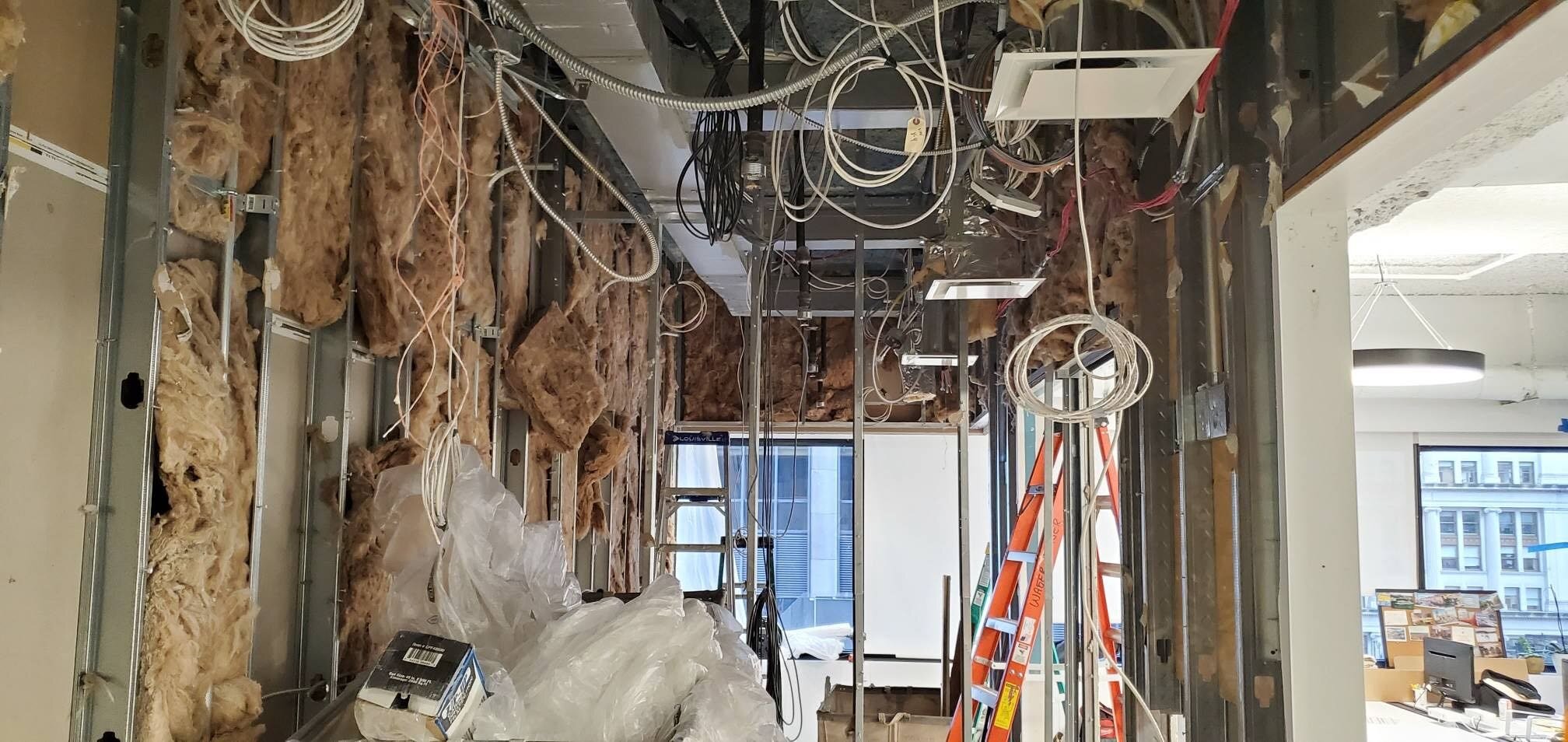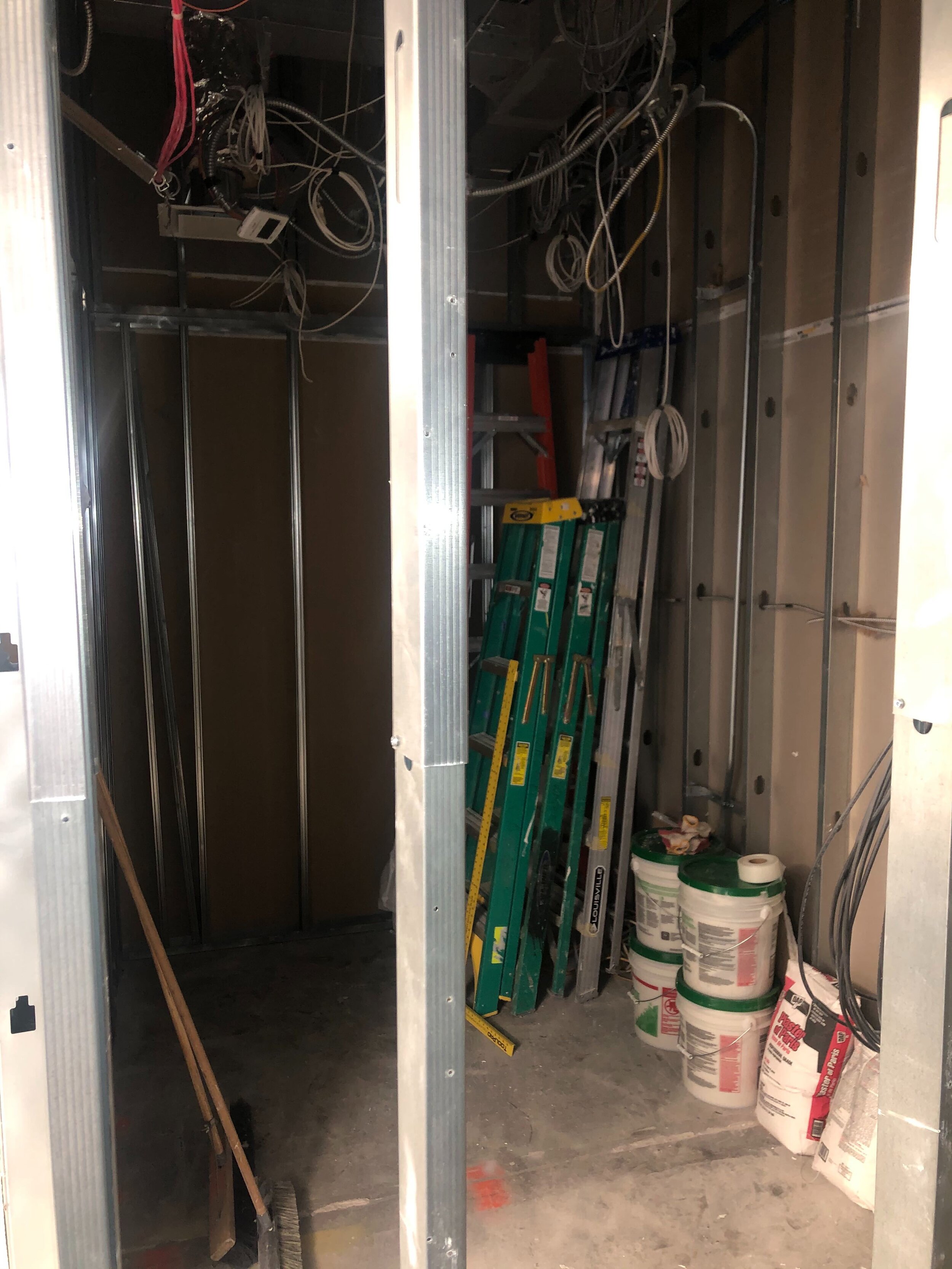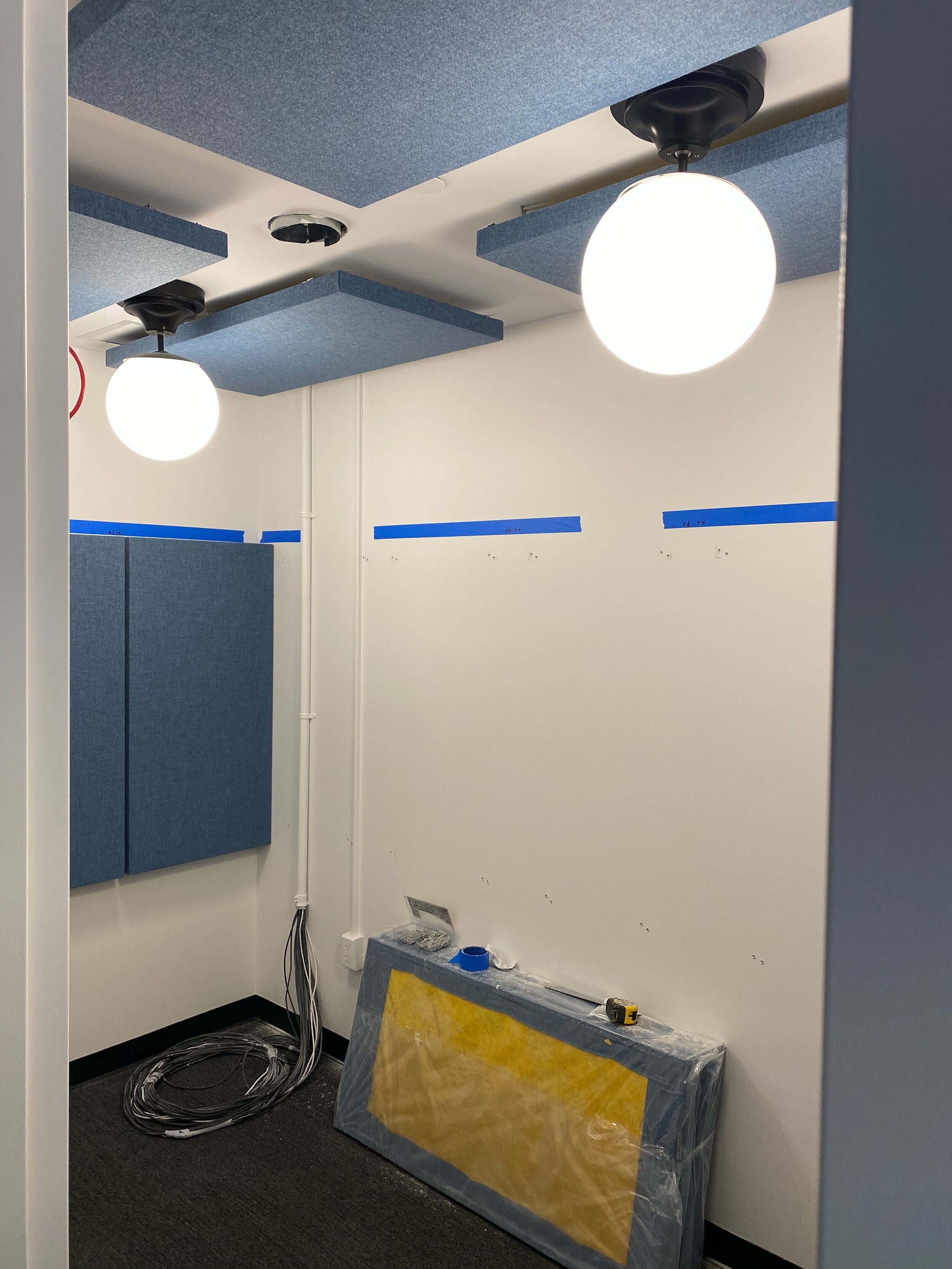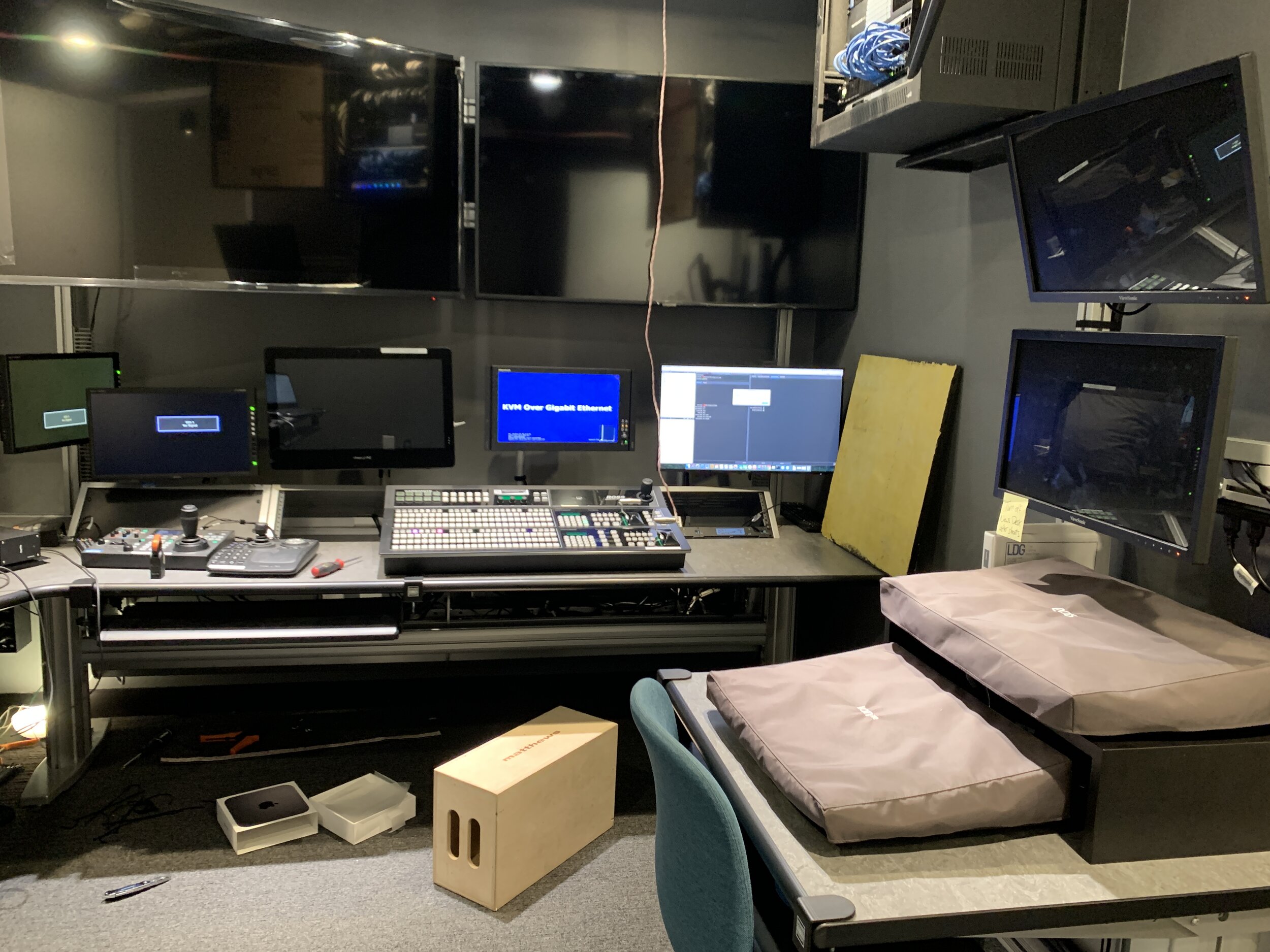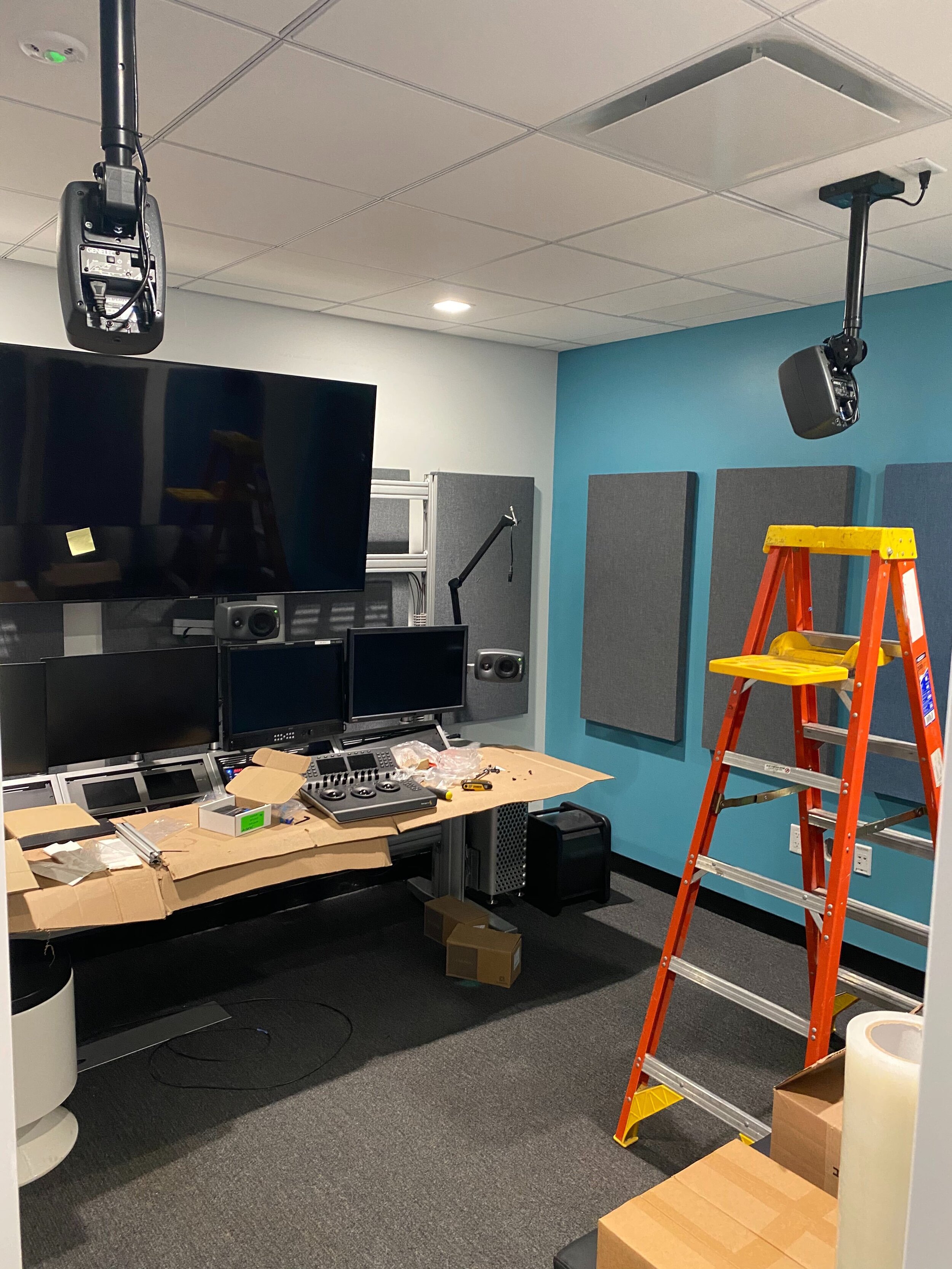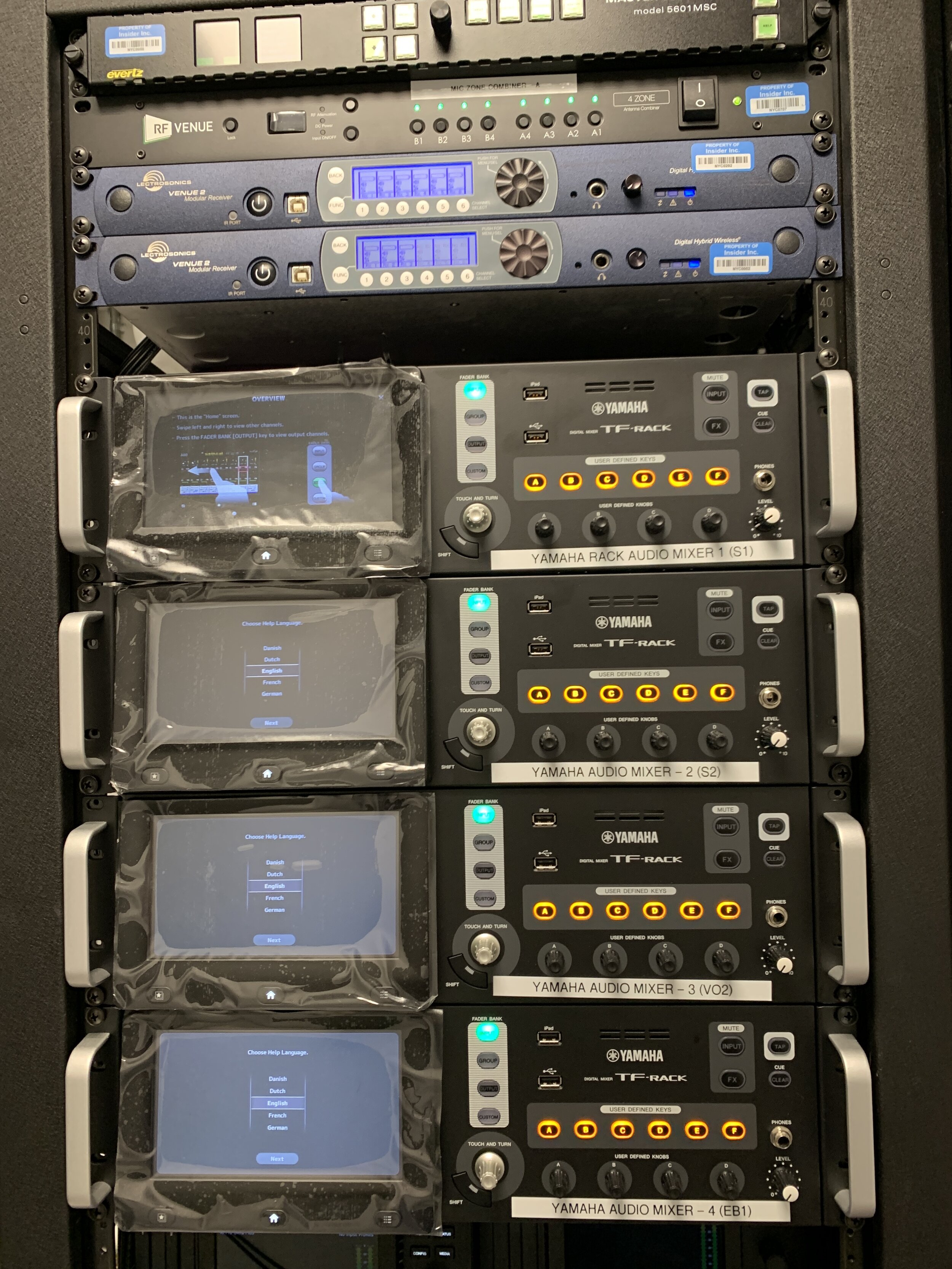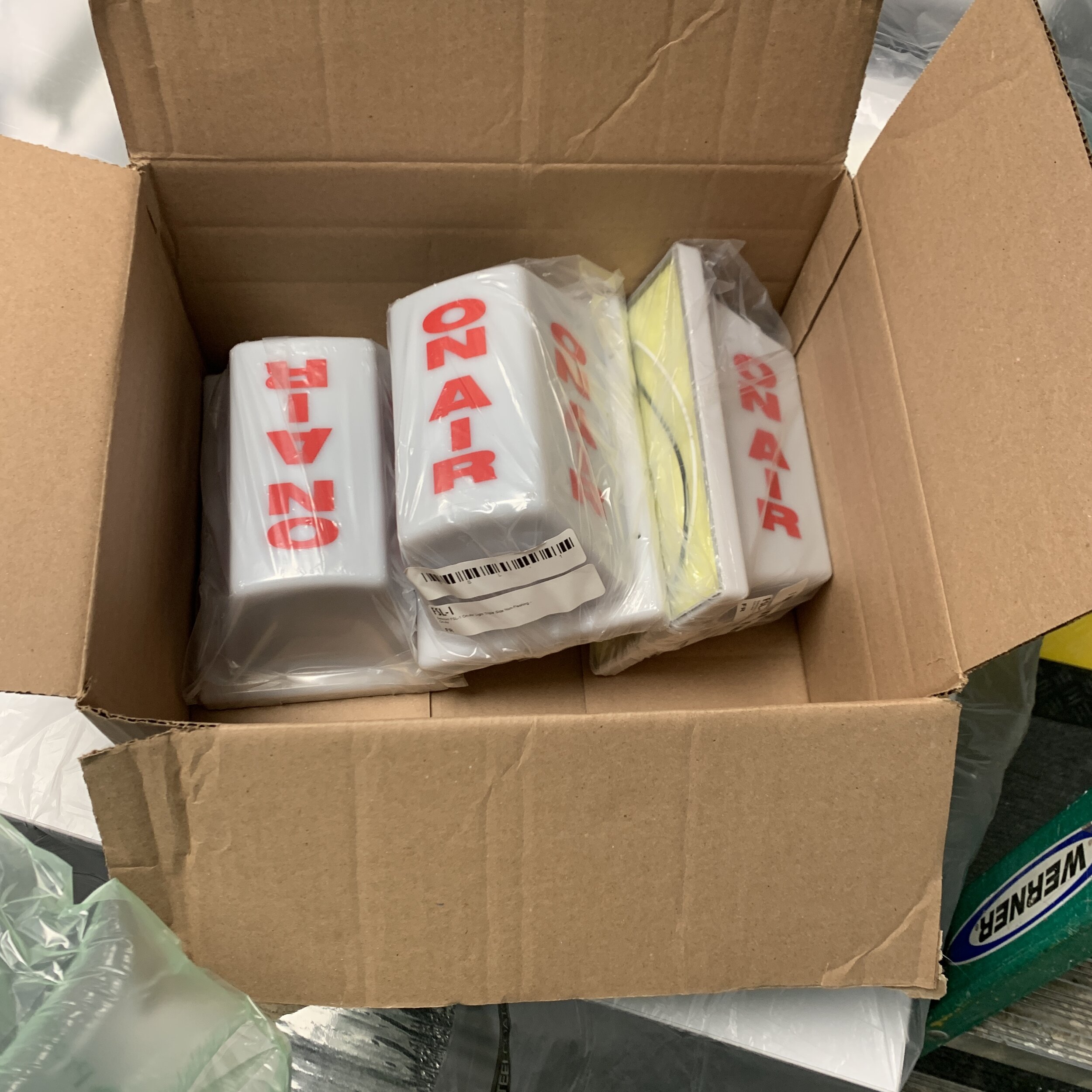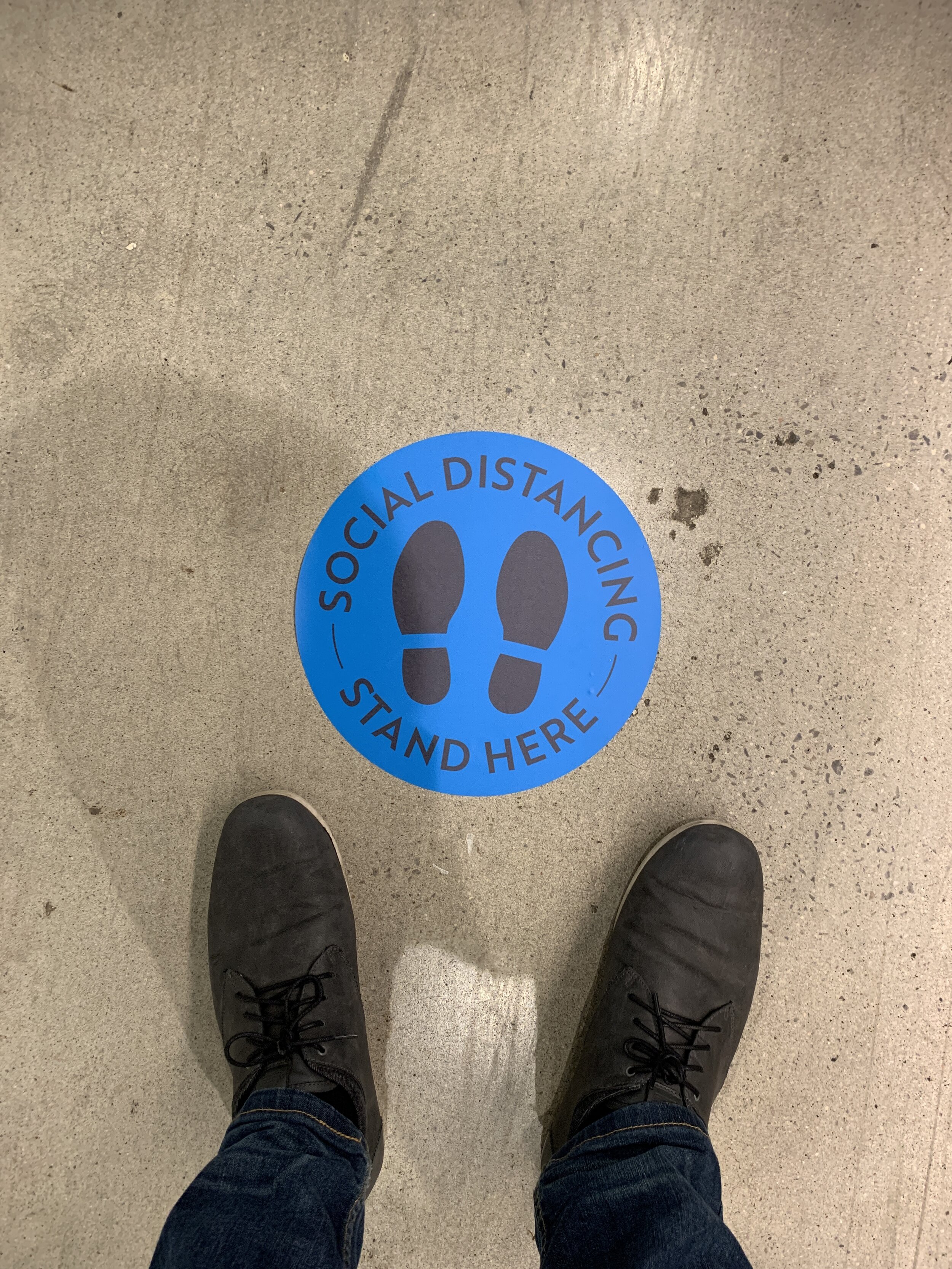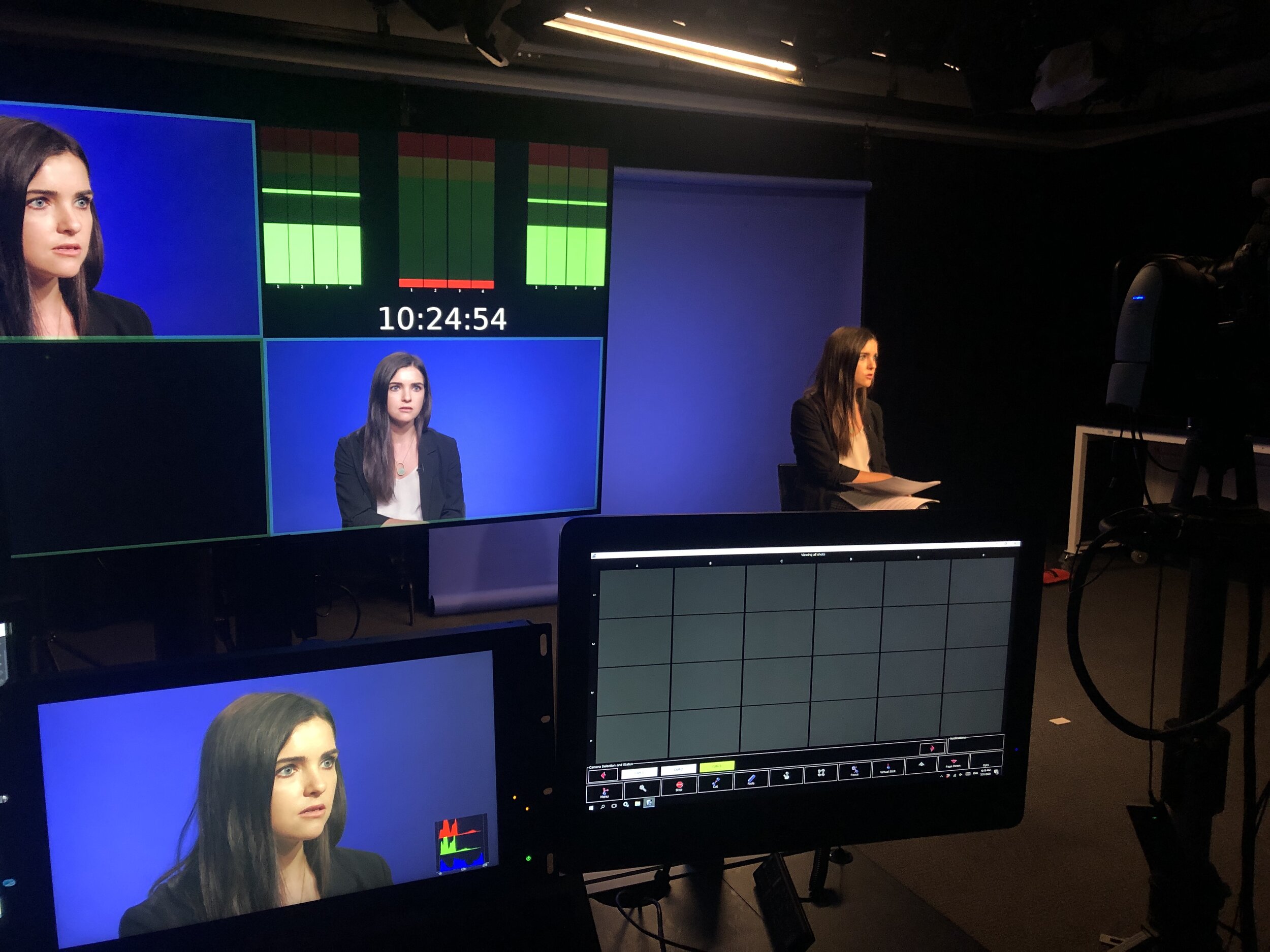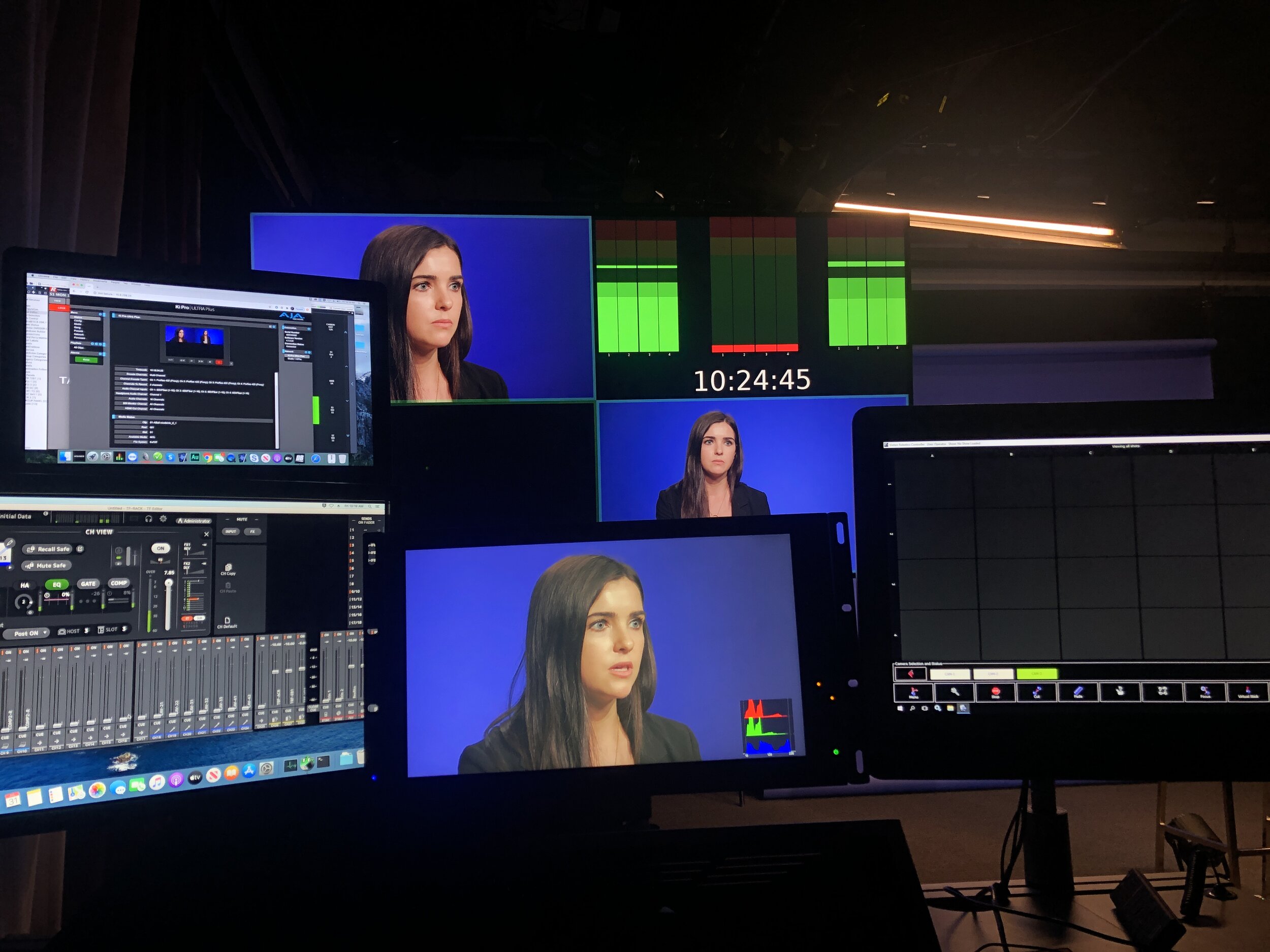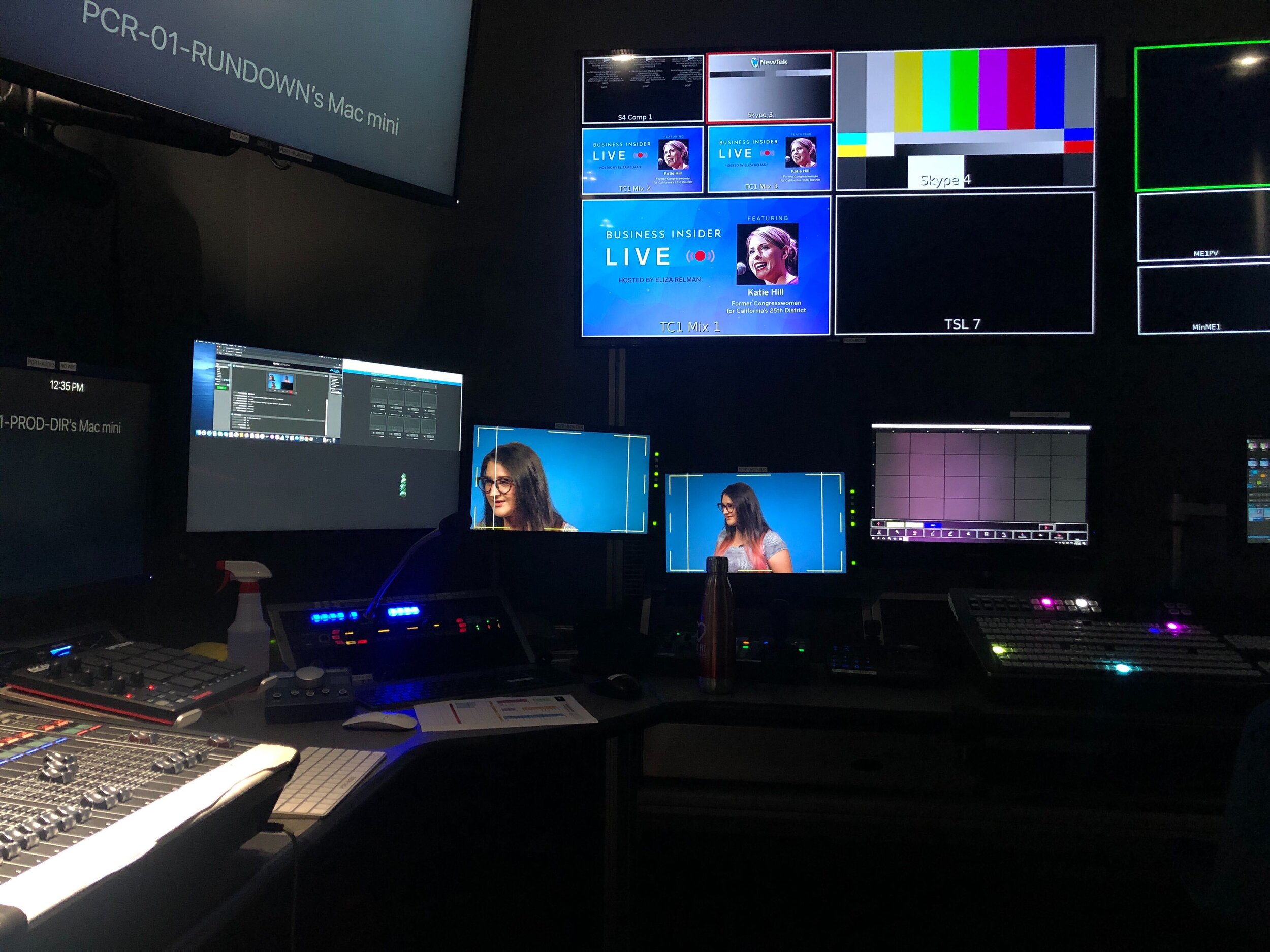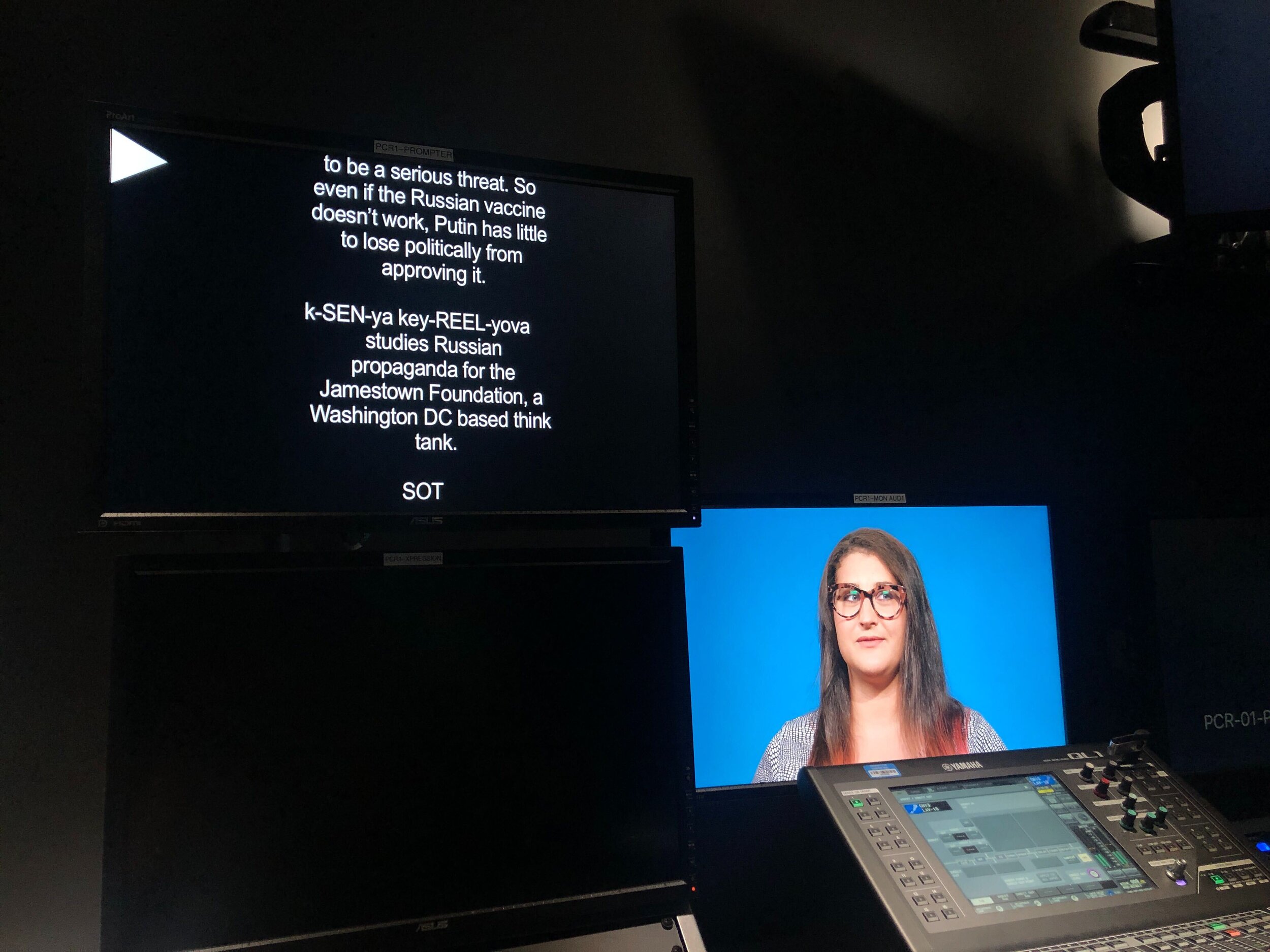How the Insider Inc. facilities team responded to the COVID-19 crisis
It’s been nearly six months since Insider Inc. transitioned employees to remote work as COVID-19 spread across the globe. During that time, our facilities teams have been busy helping employees shift to new work from home environments, managing an ongoing construction project at our NYC headquarters, and planning for gradual reopenings of our offices.
We conducted a (virtual) interview with members of our People & Culture and Media Studios teams to learn how they’ve been managing our response to the COVID-19 crisis from a facilities perspective. Shaq Lawson, director of operations and facilities management, and Corey Protin, Media Studios operation manager, talk about how the company managed the transition to remote work in March and how they’re thinking about reopening.
Editor’s note: This interview has been edited for length and clarity.
(from left) Shaq Lawson, director of operations and facilities management; Corey Protin, Media Studios operation manager. (Crystal Cox/Business Insider; Hollis Johnson/Business Insider; Samantha Lee/Business Insider)
Please introduce yourselves! How did you get started at Insider? What’s your role at the company? What team do you work on?
COREY: Sure! I run the Media Studios department here at Insider. For brevity, you can read this post about how I got started at Insider and what some of my current responsibilities are.
SHAQ: Cool! So I’m Shaq — I’m the director of operations and facilities management here at Insider. I’m a part of the People & Culture team, with a major focus on keeping things running smoothly in any situation. I’m one of the guys handling the behind-the-scenes logistics and upkeep of our team and infrastructure.
What was your job like before COVID-19 and what is it like now? How did your day-to-day change as Insider moved employees out of physical offices and into remote work?
COREY: The Media Studios is a production-support department based out of our NYC headquarters. Primarily, my team runs and produces in-office and live video productions. Pre-COVID, we were running daily productions, voiceover sessions, photo shoots, and more. When COVID-19 forced New York City into quarantine, all of our productions abruptly stopped. We haven’t returned to the same level of production since March 2020. So, our day-to-day operations underwent a meteoric shift.
SHAQ: Before COVID-19, my main focus was the upkeep of the office. I made sure any repairs, building concerns, and inventory needs were maintained and upheld. I also focused on outer office matters and ideas for new projects. Since March, I have pivoted into logistics — getting people’s equipment from the office to their homes safely. I am also focused on creating more and more efficient practices in house for us to be successful at bringing folks back into the office. I’ve adapted to wearing many hats during this transition period, but I believe I have way more of a handle on things now.
How well was Insider Inc. prepared for an extended work from home period? What was done well, and what were learning opportunities?
COREY: At the end of the day, no amount of planning can prepare an individual, let alone a company, for a pandemic. However, despite that, I think Insider did a pretty good job getting ahead of the government mandates. Executive leaders realized that we needed to prepare quickly. Back in February, Insider hosted various task force meetings to prepare for a possible COVID-19 outbreak in our office locations. There were some key takeaways from those sessions that helped us transition to at-home work. For example, our VP of IT purchased a mountain of cardboard boxes in case employees needed to pack up their workstations and make a quick getaway.
Here was Insider’s timeline at the start of the pandemic:
February 24: Insider started having disaster preparedness meetings.
February 27: Our CEO quickly communicated that employees could work from home if they felt uncomfortable in the office.
March 1: Andrew Cuomo officially announced the first confirmed case of COVID-19 in New York City.
March 6: Remote work was heavily encouraged but not mandated. Most people started transitioning at this point.
March 11: Remote work was mandated and all employees were asked to not return to the office.
March 17th: Insider paused it’s broadcast Studio Construction Project.
March 20: Cuomo shut down all non-essential work.
When Insider told all employees to leave immediately on March 11, Shaq and I were in the middle of a large essential construction project. Since there was no official state mandate at that point in time, we continued working for as long as we could. When I came back into the office the next day, it felt like walking onto the set of “I Am Legend.” It was just this moment frozen in time. It gave me unbelievable goosebumps. On March 17, we decided to ultimately pause construction until we could regroup and determine how to proceed.
Many employees believed they’d be able to quarantine for three weeks and come back later to grab the rest of their belongings. But here we are, more than six months later, and most of our employees' belongings are still at their desks in the office.
I think the clearest takeaway from Insider’s response to the pandemic is that complacency is the enemy. It can be easy to dismiss disaster preparedness as a waste of time and resources when times are good. But when things go south, you can’t politely ask the disaster to “give you a couple of days” to get ready. I think in the future, people are going to take disaster preparedness much more seriously. Luckily, we did.
What have you been working on in the past six months since NYC went into quarantine?
COREY: Our status as an essential business, coupled with various approvals from NYC Department of Buildings, allowed us to resume Insider’s essential construction work in late April. Since then, Shaq and I have spent our time working in the office through pandemic. The empty office space allowed for us to finish construction quickly and resume essential productions that were disrupted because of the project.
What was it like operating a construction project during the peak of New York City’s COVID-19 crisis? And what did you learn?
COREY: Bizarre. Each day it felt like I was the only person in New York City who was alive. The city was empty. Mass transit was desolate. Even the city’s rats decided to go away. The office went from north of 500+ employees to just 2 people on a daily basis. During this time, Shaq and I learned a lot about how to operate a business during a health crisis, and what steps you need to take to be successful in a hostile environment.
SHAQ: Very unusual. I felt like I was in a huge video game with no characters, just a lot of empty space to explore. I never thought the term “essential worker” would be as important as it is until these past months. I think people felt if you were walking on the streets of NY during that time, you had to be an essential worker or a fearless warrior. During my nine years in the industry, this is the first time I have ever completed a construction project in a pandemic. I learned it's easy to get the job done but that planning and trust are the most important factors for success.
Insider recently announced that offices will be closed to most employees through summer 2021. However, the company also launched a “15-5” Reopening Plan for the NYC headquarters, which allows 15-25 employees in the office, 5 days a week. How did the plan come about? Who was involved? What was the process for creating it?
COREY: Between May and June, I started realizing that we had a bunch of upcoming sponsored events, like this one, that were critically dependent on our finished Studio infrastructure. However, Insider had no official reopening plans in place. Our workforce had made the hard switch to remote work and was in a holding formation. So, Shaq and I put our heads together and started brainstorming what we needed to change, buy, and do to ensure our employees’ safety.
We estimated that we had no more than 15 contractors who were in the office each day during our construction project, including ourselves. We decided to use that number for the first phase of a broader “return-to-office” plan. The number was extremely conservative, but we could easily ensure the safety of our employees this way as the office has a capacity of roughly 547.
We quickly realized any plan would also have to address Insider’s COVID-19 policies at large. So, Shaq and I started voraciously consuming research, health recommendations, and various whitepapers from places like WHO, CDC, NYC’s Department of Health, and organizations like Alliance of Motion Picture and Television Producers. We combined that with our hands-on experience to create a comprehensive 22-page Insider COVID-19 policy document. From there, we looped in our legal team, our COVID-19 task force, HR, and executive leadership to fine tune the plan.
We launched it on July 15, allowing a select few back into the office.
SHAQ: Our mission was to make sure that if we were going to reopen the office in any capacity, we had a purpose and we had the safest plan possible. We wanted to create an environment that everyone would be comfortable in, without worry or danger of being exposed to COVID-19.
It all started with Corey and me feeling frustrated with everything COVID was impacting. The morale of the world was just down because nothing but COVID and sadness was being broadcast. We figured at some point, people would get tired of seeing the same disappointing news every day. We thought about what we could do to boost morale and help Insider folks get back to some sense of normalcy. We had newly revamped studios and enhanced capabilities, and we thought about how awesome it would be to get our video staff back in the office where they’d be able to use the new resources.
How is the “15-5” Reopening Plan going so far? What has the response been from employees — are they interested in returning? Has that changed over time?
SHAQ: The 15-5 plan has been going great! Since we launched it in July, we have had about 70+ people come into the office in some capacity — whether to work for a bit or on a recurring basis, or to pick up equipment.
It was a slow response the first week or so. Corey and I started meeting with some teams to further clarify and discuss the plan and answer any questions directly. Employees were skeptical about returning, which was expected, but I think constant communication and transparency allowed the plan to gain traction. More employees were willing to come in August than July, and some even asked to come in sooner.
I think the hard work and time Corey and I put into creating the plans initially, as well as being in the office ourselves, helped to convey a sense of security and normalcy. Corey and I have been at the office almost every day since the pandemic began.
As time goes on and we head into fall, we are hearing from more and more people who want to return to the office. I continue to keep up with the latest COVID-19 news to determine the best approach and safety measures for our offices.
Although summer 2021 seems like it’s far away, how are you starting to prepare for a larger group of employees to safely return at that time?
SHAQ: Like Corey said before, we can plan and plan, but no amount of planning will give us a 100% guaranteed solution. I think the 15-5 plan is a great start. We will increase the amount of people in the office as we get more feedback and requests come in. We’ve been adjusting the 15-5 plan to meet our employees’ needs as the months have passed. Regardless, once we’re ready to welcome back a larger group of employees, we will have strategic plans in place to manage the crowd. Although summer 2021 is a long way ahead, many individuals may still exercise their right to come in later than that. As it stands right now, my plan would be to stagger employees in a phased approach — maybe bringing back 35% of the workforce, then 70%, then 100%.
When employees start going back into offices, how do you think the workplace and office will change? What new resources or practices will stay?
SHAQ: I think corporate office culture for businesses will never be the same. The “norm” we once knew of going into offices to complete our tasks — and spending long hours at our desk — is now something of the past. I believe a hybrid culture of being remote/in office will be a regular thing going forward. I believe that with this flexibility, interactions in the office will be cautious. I think that there will no longer be overcrowding of spaces such as elevators and conference rooms. I also believe that making sure things are as contactless as possible will be important for the foreseeable future.
What can other companies learn from how Insider is handling the crisis and office reopening plans?
SHAQ: I think other companies can learn about the importance of having emergency plans and protocols for certain situations that may come up even if it's a slim chance. Initially, we all thought this would be a one- or two-week shutdown for the office. Here we are six months later still planning and refining things weekly. We don’t have a magical stopwatch to know when COVID will end, but we can plan and run simulation tests based on what we think the world might be like in the coming months and years. My best advice to all other companies is to get a plan going. Do not just speculate what you “think” it will be like. The more real-time data you can gather from facts, the more impactful your solution will be. You only need a small sample to begin to determine what things can eventually look like for a larger team.
COREY: To reiterate on what Shaq said, my advice is to just overcome the initial inertia and do something. Start small. Assess. Tweak. Reassess. Rinse and repeat. But if you don’t take that first step, the weight of the decision will continually build and eventually overwhelm you.


